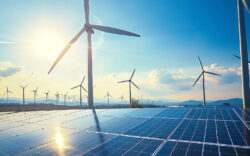In today’s issue:
- Perhaps the most groundbreaking development in the nuclear market in a generation
- Germany now relies on costly imported energy, made worse by sanctions on Russian gas
- The stakes are huge, but so is the potential reward
Here’s a big prediction for 2025 that would’ve sounded impossible not too long ago: this year, Germany will look to reverse its anti-nuclear stance, either by reopening its old nuclear plants or committing to building its own fleet of small modular reactors (SMRs).
If you know anything about Germany’s history with nuclear power, this might sound far-fetched – an absolute about-turn. This is a country where opposition to nuclear energy has been almost cultural, shaped by disasters such as Chernobyl and Fukushima.
In fact, back in 2011, German Chancellor Angela Merkel bowed to public pressure and promised to phase out nuclear completely. By April 2023, Germany had gone all-in on this promise, closing the doors on its last nuclear plants and pinning its hopes on renewables under the Energiewende programme.
But now? Well, the decision looks more like a self-inflicted wound – and the consequences are piling up. Energy imports are skyrocketing, electricity bills are through the roof and the environmental benefits aren’t living up to promises.
Before ditching nuclear, Germany was an energy exporter. Now it’s the opposite. Between 2022 and 2024, the country’s import/export balance swung by a jaw-dropping 50 terawatt-hours (TWh).
That shift isn’t just inconvenient, it’s expensive. Germany now relies on costly imported energy, made worse by sanctions on Russian gas. Consumers and manufacturers are paying the price. Many companies are moving operations abroad to escape these high costs. The German economy is faltering, with some calling it a slow process of deindustrialisation.
Then there’s the cost of the Energiewende itself: a staggering €700 billion.
Contrast that with a study in the International Journal of Sustainable Energy, which estimates Germany could have spent just €36 billion keeping its nuclear plants running and building new ones. The cherry on top? This route could’ve slashed carbon emissions by 70%, compared to the modest 25% reduction achieved so far.
Germany’s ambitious climate goals, including achieving net zero by 2045, face critical challenges. Electricity demand is expected to jump by over 30% by 2030, driven by electrification and economic growth. Renewables alone are looking unlikely to meet all of this demand, particularly as Germany also phases out coal by 2038.
Enter nuclear power, the steady, low-carbon energy source Germany abandoned too soon. Advanced technologies such as small modular reactors (SMRs) are particularly intriguing. These compact reactors are safer, faster to build and can be scaled up or down based on energy needs.
So why do I think nuclear is making a comeback in 2025? It’s all about politics.
Snap elections are scheduled for February 2025. The Christian Democratic Union (CDU), led by Friedrich Merz, is expected to take the reins. The CDU has been openly critical of the Green-led coalition for shutting down nuclear plants during an energy crisis.
Merz himself isn’t shy about discussing nuclear power. While he’s acknowledged that restarting old plants would be challenging, he’s keen on exploring SMRs and other innovative nuclear technologies. A CDU-led government might even commission studies to see if reopening existing facilities is feasible or push forward a domestic SMR programme.
But here’s where things get interesting: nuclear power is now more popular than the Green Party itself. How did that happen?
Recent investigations revealed that Green Party officials misled the public about utilities’ willingness to keep nuclear plants running. Contrary to their claims, several plants could be restarted with relatively minor repairs, new fuel and rehired staff.
This revelation has dented the Greens’ credibility, and with Germany in an energy crunch, the public are looking for practical solutions.
Globally, nuclear energy is experiencing a renaissance. Poland is building its first nuclear plants from scratch, while Italy, which previously exited nuclear, is considering a comeback.
At COP29 in Baku, International Atomic Energy Agency (IAEA) head Rafael Grossi called a German nuclear revival “logical”, arguing that it’s essential for balancing energy security with climate goals.
Of course, reopening Germany’s nuclear plants won’t be easy. Many have been partially dismantled. Restarting them will require significant investment. But experts say the technical and financial hurdles aren’t insurmountable with the right political will.
SMRs, in particular, offer a clean slate. Their modular design means quicker construction and easier integration into Germany’s existing grid. Plus, they address long-standing concerns about safety and nuclear waste, making them a palatable option for a country still cautious about atomic energy.
By 2025, Germany’s energy and economic crises, paired with shifting political winds, will make a nuclear comeback not just logical but necessary. A CDU-led government could reopen the conversation about nuclear energy, possibly restarting plants or spearheading a bold SMR initiative.
The stakes are huge, but so is the potential reward. If Germany can embrace nuclear again, it could set an example for other nations wrestling with similar challenges. Reintegrating nuclear into its energy mix would signal a new era of innovation, resilience and climate leadership.
2025 might just be the year Germany takes a bold step back toward the nuclear future it once abandoned.
While this is not guaranteed to happen, it is certainly possible. If it does, it would be profoundly significant not only for Germany and Europe but also prove that even the most entrenched policies can change when circumstances demand it.
Of course, if it does, Germany will be in very good company indeed.
As I write, governments across the world are ALL pressing the nuclear button, initiating a global $100 TRILLION nuclear power reboot.
The UK has unveiled its “largest nuclear expansion in 70 years,” aiming to quadruple capacity by 2050.
Japan, once wary post-Fukushima, is restarting 17 reactors by 2025.
France, already 70% nuclear powered, plans six new reactors by 2050.
All in all, 22 nations – including the US, UK, and Japan – signed a binding pact to TRIPLE nuclear energy production.
And it has already sent nuclear stocks soaring.
But with 491 reactors slated for construction across 35 countries…
This could just be the beginning of a much more lucrative boom.
If you want to learn how you could profit from this situation…
Simply click here to watch our urgent briefing: The $100 Trillion Nuclear Reboot.
Until next time,
James Allen
Contributing Editor, Fortune & Freedom





